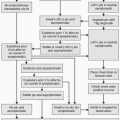Varicose, Perforator, and Spider Veins: Liquid Ablation
Lindsay Machan
Distension and dysfunction of the small veins which ultimately feed into the superficial venous system can occur alone or in association with truncal vein reflux. Abnormal small veins include telangiectasias (“spider veins”), flat red vessels smaller than 1 mm in diameter, and reticular veins which have a cyanotic hue and are 2 to 4 mm in diameter. Telangiectasias are present in up to 28.9% of men and 40.9% of women. Risk factors include heredity, pregnancy, female hormones, weight gain, and prolonged sitting or standing.
Perforator veins, when competent, shunt blood from the superficial to the deep system. Except when directly related to active venous ulceration, there continues to be controversy regarding the need to treat incompetent perforators.
Sclerotherapy is the ablation of a vascular structure by injection of a chemical irritant. In the legs, it is the primary treatment for small-vessel venous disease. Sclerotherapy for large vein ablation, usually performed under ultrasound guidance, is primarily used when the techniques discussed in the prior chapter are not applicable, such as large tortuous varicosities. Particularly for patients presenting for cosmetic treatment, excellent sclerotherapy is essential to achieving patient satisfaction and clinical success.
1. Small and large vein sclerotherapy
a. Cosmesis
b. Symptom relief
(1) Pain
(2) Burning
c. Remnant disease after surgical or endovenous treatment of truncal reflux
2. Perforator incompetence
a. All treatments of coexisting superficial reflux have been exhausted.
b. Diameter >3.5 mm
c. Reflux >0.5 seconds
d. Close proximity to active ulceration
Contraindications (4)
Absolute
1. Allergy to sclerosing agent
2. Acute thrombophlebitis/deep vein thrombosis (DVT)
3. Hypercoagulable state
Relative
1. Pregnancy/breastfeeding
2. Needle phobia
3. Inability to tolerate compression
4. Peripheral vascular disease
5. Systemic or infectious skin disease
6. Uncontrolled asthma or migraine
7. Known patent foramen ovale
8. Inability to ambulate/impending immobilization (e.g., surgery or prolonged travel)
Preprocedure Preparation
1. History and physical exam as for saphenous venous reflux. The patient’s expectations should be clearly defined and, if necessary, realistically modified.
2. Duplex ultrasound. If reflux is demonstrated in the saphenous or other superficial truncal veins, this must be treated first. Some practitioners will perform sclerotherapy in the same session after truncal vein obliteration, others prefer to wait up to 12 weeks.
3. Consider taking pretreatment photographs for documentation and comparison with the postoperative results.
4. Informed consent should include discussion that multiple treatment sessions are typically necessary and that new vessels are likely to develop over time.
A list of injectable agents used for sclerotherapy is shown in Table 45.1. Only the detergents sodium tetradecyl sulfate and polidocanol are U.S. Food and Drug Administration (FDA)-approved for intravenous injection. The most commonly used sclerosants are tetradecyl sulfate and hypertonic saline (the 23.4% concentration is FDA-approved, but its use in sclerotherapy is off-label).
Small Vein Sclerotherapy
1. The guiding principle is to ablate the desired vessels while avoiding damage to normal collaterals and surrounding tissue by using the lowest effective volume and concentration of sclerosant. Suggested concentrations of commonly used sclerosing agents are listed in Table 45.2.
2. Larger veins are treated before smaller vessels. Treatment of the pretibial area and ankle may have poorer outcomes, so injection in these locations should not be first and should be limited in each session.







